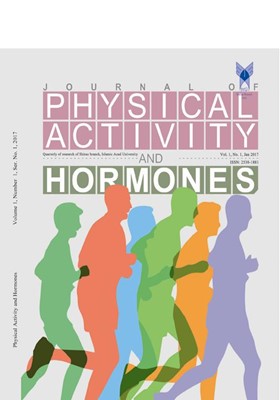-
-
List of Articles
-
Open Access Article
1 - Effects of short term lifestyle activity modification on lipid profiles in obese and overweight middle aged men with type 2 diabetes
Jalil Ghasemianpoor Mohadeseh Nematollahzadeh Mahani -
Open Access Article
2 - Effects of 8 weeks combined resistance and endurance training on A-FABP in obese middle age men
Ehsan Bahrami Abdehgah Najmeh Abdollahpur Fariba Hosseini -
Open Access Article
3 - Effect of a session training on serum concentration of immunoglobulin A, cortisol and lipoprotein in the morning and the afternoon in elite male Taekwondo
Mohammad Hassan Boostani Mohammad Ali Boostani Fateme Khodaie Khodaie -
Open Access Article
4 - Plasma leptin and adiponectin concentrations in postmenopausal women with breast cancer following aerobic exercise
Mehrzad Moghadasi Reza Nouri Laleh Karami Bonari Shima Gholamalishahi Mohadeseh Nematollahzadeh Mahani -
Open Access Article
5 - Effect of vitamin C on delayed onset muscle soreness indexes
Shahram Foroohi -
Open Access Article
6 - The effects of concurrent training with and without branch chain amino acids on lipid profiles and testosterone level of male body-builders
Payam Rafiee Eskandar Rahimi
-
The rights to this website are owned by the Raimag Press Management System.
Copyright © 2021-2025







